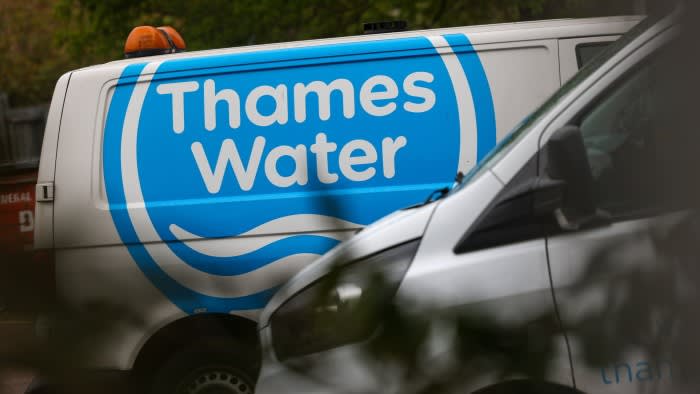Unlock the Editor’s Digest for free
Roula Khalaf, Editor of the FT, selects her favourite stories in this weekly newsletter.
Thames Water’s lenders are drawing up contingency plans to provide fresh funding to the struggling utility through a restructuring of its £18bn debt pile, in order to prevent Britain’s largest water provider being renationalised if its crucial equity raise fails.
Thames Water and its adviser Rothschild has been canvassing specialist infrastructure investors to provide new equity to the water company to help fund substantial investment needs and fix its balance sheet.
But some of the utility’s bondholders are preparing contingency plans in the expectation that these efforts are unsuccessful, according to several people familiar with the matter.
A group of 90 creditors holding £9bn of debt at the utility’s operating company are working with lawyers at Akin and bankers at Jefferies to draft their own backstop funding solution, with a view to also preventing the company from falling into a so-called “special administration” that would see it in effect renationalised.
Options include a partial debt-to-equity swap as well as providing new funding that would inject further cash into the company, the people said.
The creditors include UK asset manager Abrdn, US insurer Assured Guaranty and distressed debt fund Elliott Management. The last has built one of the biggest positions in Thames’s debt in recent weeks, according to two bondholders, after buying its top-ranking debt at a discount.
Thames Water is racing against time as it struggles with higher interest rates on its £18.7bn debt mountain and more than £1bn of loans that need refinancing by the end of the year, only some of which can be rolled over.
The monopoly, which serves 16mn households, needs £750mn of equity from investors to avoid running out of cash by May 2025 and a further £2.5bn by 2030 to improve its failing infrastructure, which it admits poses a “risk to public health and safety.”
Bondholders are keen to avoid a special administration because any funding the government provides during that process would have to be repaid ahead of their debt. Any restructuring they propose would also need to help Thames Water regain its investment-grade credit rating, which it lost in July, putting it in breach of its licence conditions.
The bondholders are also trying to devise a solution that would keep as much of Thames Water’s long-dated debt in place as possible. This is because the financial model for UK water companies relies heavily on holding financing costs within a “weighted average cost of capital” agreed with regulators, and these bonds locked in interest rates far below present market conditions.
Rothschilds and Thames Water declined to comment. Bloomberg first reported the creditors’ initiative.
Thames had around £16bn of top-ranking “class A” debt at the end of March, according to a recent company report, with a further £1.4bn of lower-ranking “class B” debt. On top of these bonds and loans at the regulated utility, debt at parent company Kemble takes the overall group’s debt pile to £18.7bn.
Thames’s class B bonds are trading at 35 pence in the pound, indicating bondholders are braced for substantial losses, while Kemble’s bonds are trading at less than 5p, suggesting investors expect a total wipeout.
Thames has put no limit on the size of the potential cash call so as to garner as much interest as possible. Initial expressions of interest closed last Friday, but it will take four to six weeks for any interested parties to submit formal bids, sources close to the discussions said.
“We are not being prescriptive. It’s a question of how much would you be prepared to put in,” said one person close to the equity raise, admitting it was likely “to be a challenge”.
Investors, advisers and creditors all told the Financial Times they had little hope that the equity raise would succeed, however.
“This is a very, very hard equity raise,” an investor said.



